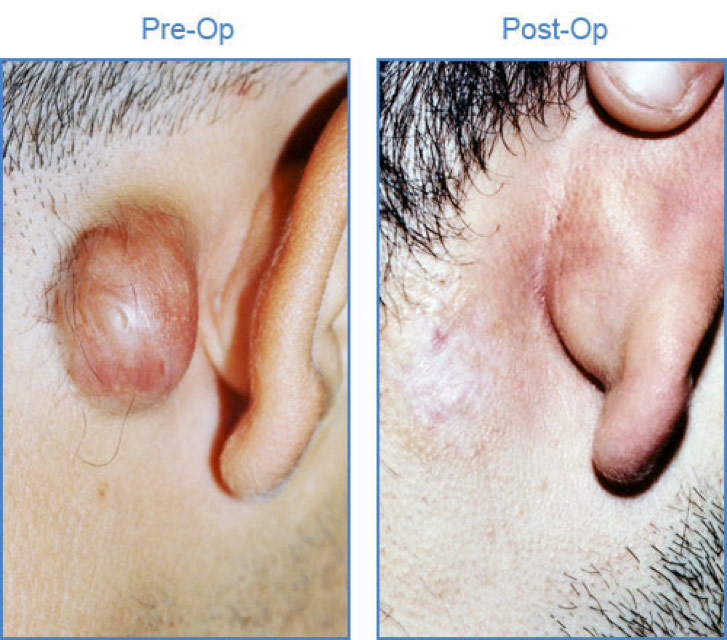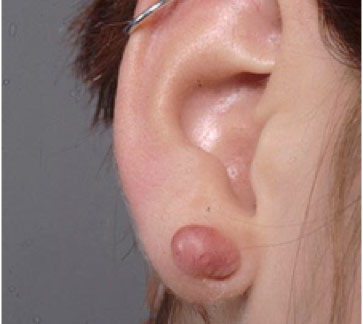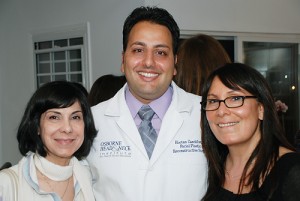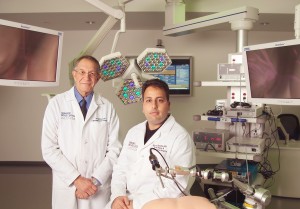- Hereditary Hemorrhagic Telangiectasia - May 25, 2016
- Hereditary Hemorrhagic Telangiectasia: Septal Perforation and Nose Bleeds - May 23, 2016
- Hereditary Hemorrhagic Telangiectasia: Epistaxis and Septal Perforation - May 18, 2016
- Wegener’s Granulomatosis: Autoimmune Disease and Multi-Focal Septal Perforation - May 9, 2016
- Kyle Korver: Facial Injury and Nasal Fracture - March 24, 2015
- Russell Westbrook: Facial Injury and Surgery - March 5, 2015
- Mega-perforation: Pushing the Limits of Septal Perforation Repair - November 26, 2014
- Septoplasty Complication and Septal Perforation - November 24, 2014
- Nose Picking (Rhinotillexis) and Septal Perforations: Why I should stop picking my nose…? - November 24, 2014
- Nasal Fractures, Septal Hematoma, and Septal Perforation: Simultaneous Rhinoplasty and Septal Perforation Repair - October 1, 2014
Is cryotherapy an effective treatment for keloids?
Question: A few years ago I had surgery to remove a small growth from my ear. A few months after the procedure I noticed that I was left with a scar that continued to grow. My doctor diagnosed me with a keloid and said that I could have it removed but the likelihood of recurrence would be high. A friend of mine suggested cryotherapy. Will cryotherapy permanently remove my keloid?

Discussion:
Cryotherapy is a safe and effective treatment for keloids with a success rate greater than 97%. Unlike other treatments, the goal of cryotherapy is to treat the keloid from the inside out, thereby eradicating the tissue in its entirety and greatly reducing the likelihood of recurrence. Other treatments attempt to treat the surface of the lesion with little to no success. Steroid injections attempt to reduce the size of the scar but can often lead to undesirable pigment changes or even skin atrophy. Surgical excision attempts to remove the lesion but carries a large risk of recurrence and larger scar formation. Cryotherapy is a superior choice to conventional keloid treatments because of its high efficacy, minimal discomfort, and remote risk of complication.
Cryotherapy is a relatively painless and fast procedure. After a local anesthetic has been applied to numb the area, a special needle is passed through the middle of the scar. Liquid nitrogen is passed through the needle, never coming in contact with the skin or the scar. The deep tissues of the keloid freeze, disrupting the blood supply of the lesion. Throughout this process, the underlying skin and vasculature is protected and unharmed, causing minimal if any change in skin pigment. The patient recovers from the procedure almost immediately noting resolution of typical keloid symptoms such as itching, burning, and pain. Since sutures are not necessary after treatment, patients can return to their regular activities the same day with minimal, if any, impact to their lifestyle. Additionally, most patients require only a single treatment for effective removal of a keloid.

Keloids are large scars that have resulted from the overproduction of collagen. The cellular machinery that is responsible for normal scar production is thought to be oversensitive or deregulated in some people. Individuals with darker skin tones, certain races, and age groups 10-30 are most susceptible to the formation of keloids.
In all cases of keloids or hypertrophic scars, appropriate evaluation by a qualified physician is recommended in deciding which treatment plan is best for your individual situation. The physicians of the Osborne Head and Neck Institute have performed numerous keloid and scar revision procedures, including cryotherapy. Dr. Jason Hamilton and Dr. Hootan Zandifar have established in their practice the use of cryotherapy in treating keloids with great success.
Key Points:
- Cryotherapy has a 97% success rate in non-recurrence of keloid scars.
- Topical keloid treatments are usually ineffective because they only treat the surface of the lesion, allowing an opportunity for recurrence.
- Steroid treatments can carry complications such as skin atrophy and pigment changes.
- Surgical excision carries a very high rate of recurrence and keloid enlargement.
- Cryotherapy is a brief and relatively painless procedure usually requiring only one procedure and minimal recuperation time.
To learn more about cryotherapy treatment for Keloids, please contact the Osborne Head and Neck Institute.



